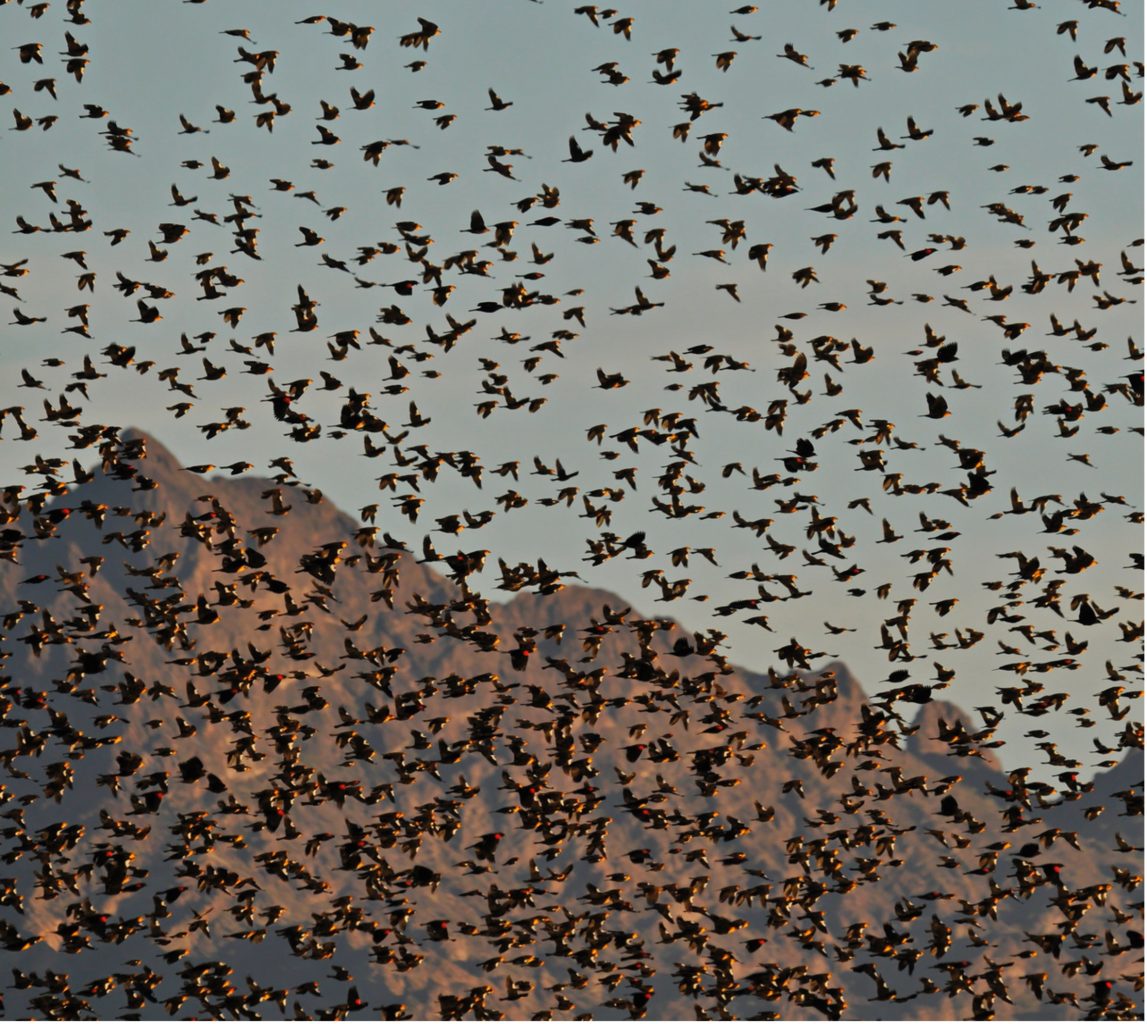
Among Friends. Yellowhead, by Walt Anderson
I admit to a fondness for blackbirds. Most have dramatic behaviors, and they can gather in enormous mixed-species flocks in the winter, filling the air with a riot of sound when in flight.
The largest of them, the Yellow-headed Blackbird, has the scientific name Xanthocephalus xanthocephalus, which may sound like some kind of curse spit with unusual vehemence, but it translates as “yellow-headed yellowhead.”
Buenos Aires National Wildlife Refuge receives these visitors on an erratic basis, mostly from July through October. Aguirre Lake and Headquarters are good places to see them when conditions are right, but Triangle Pond holds the record, with a swirling dervish of at least 1000 recorded on 13 September 2024.
To many people any black bird is a “blackbird,” but this generalization is about as meaningful as calling every gull a “seagull.” I want to acknowledge that each “blackbird” species deserves a closer look and appreciation for its own distinctiveness. Follow along as I dispel some myths and pay homage to a fascinating bird.
#blackbird #yellowheadedblackbird #xanthocephalus #brewersblackbird #redwingedblackbird #yellowhoodedblackbird #meadowlark #bobolink #icteridae #sturnella #polygyny #epc #lowercoloradoriver #wildlifemanagement #prescottcollege #cibolanationalwildliferefuge #waltandersonphotography
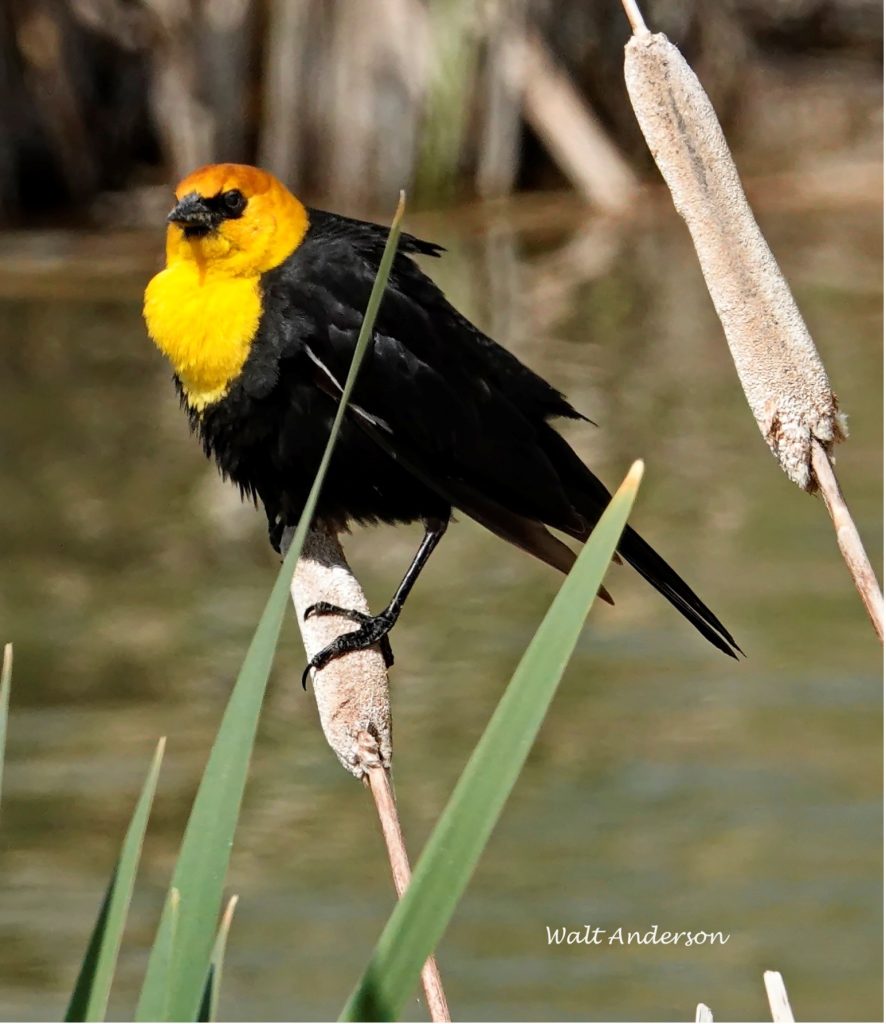
A breeding male Yellow-headed Blackbird is a robust, medium-sized songbird with a black body, yellowish head (often suffused with saffron), black mask, and white wing patch, most visible in flight.
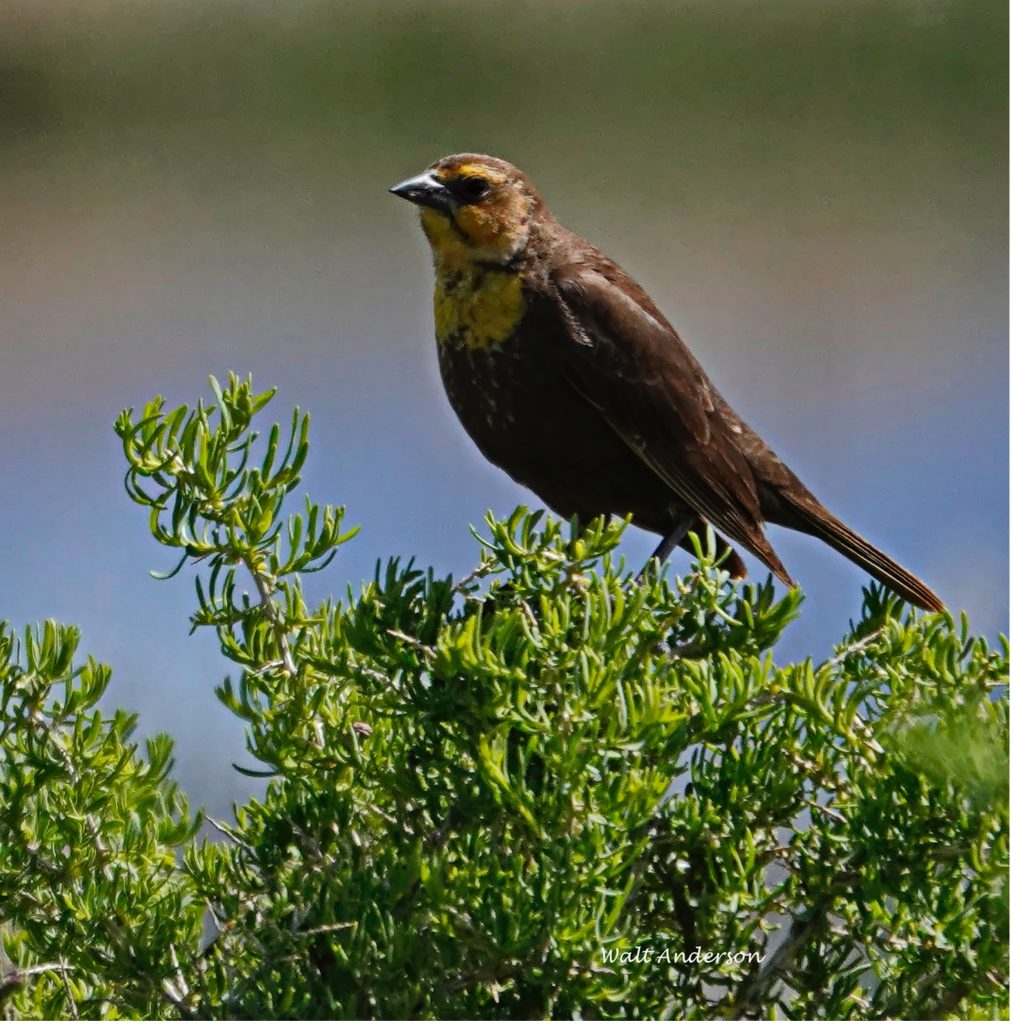
The female is more subdued, deep brownish rather than black. She lacks the white wing patch and has a smaller bill. She sports a narrow, dark moustache stripe (first-year males are rather similar but are much larger, with more dark marks around the bill and some white in the wings).
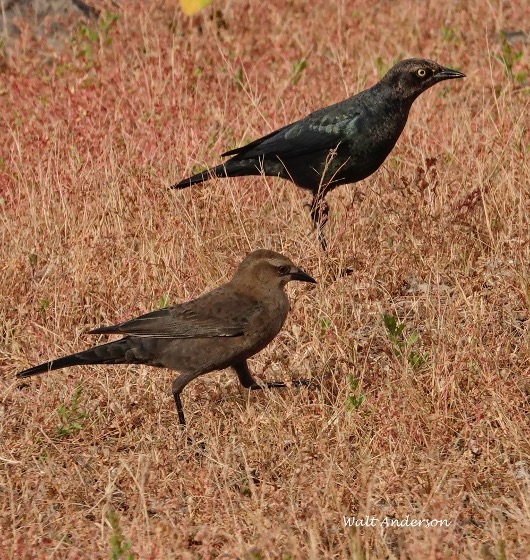
You might think that “blackbirds” are each other’s closest relatives, but it is simply not true. Brewer’s Blackbirds, for example, are more closely related to grackles. If you watch them, you could conclude rather easily that they are diminutive grackles, though they are different enough to be in separate genera.
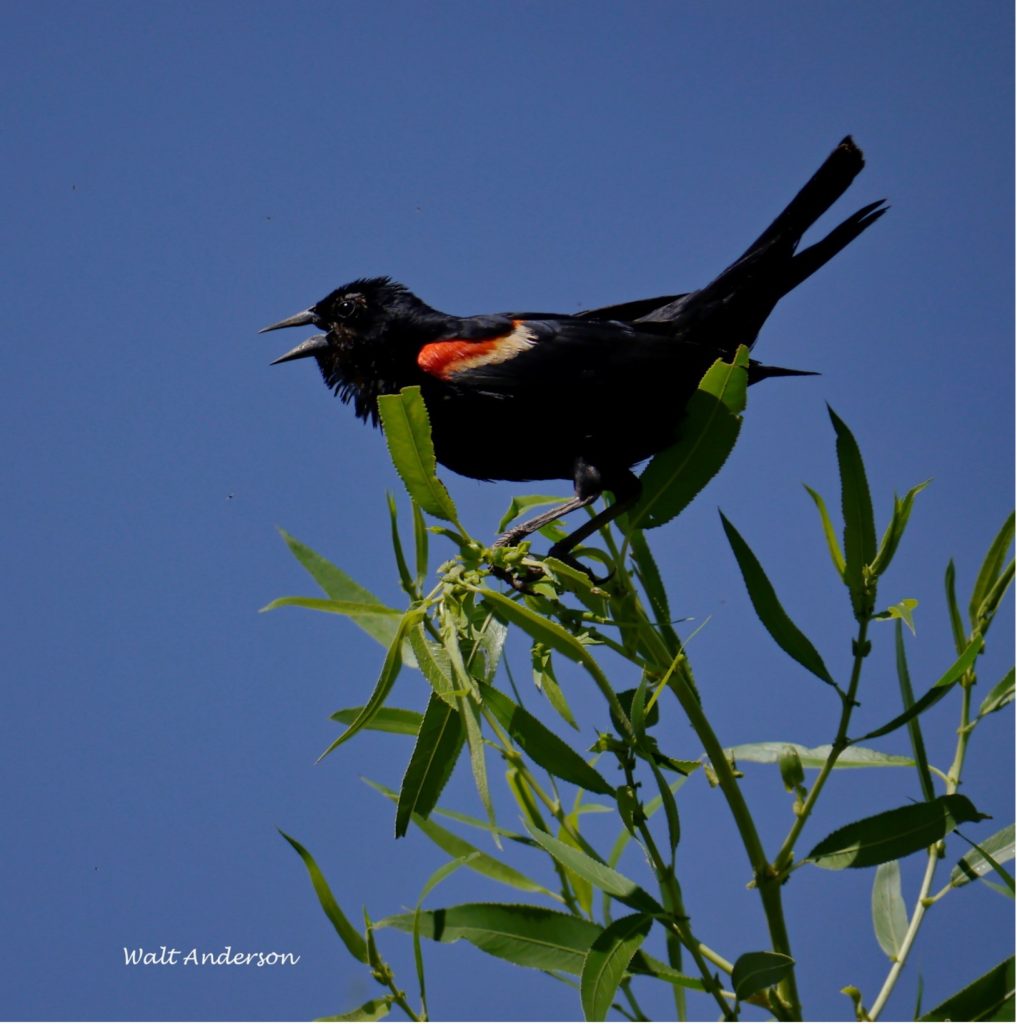
The familiar Red-winged Blackbird is in yet another genus, though it is closer to the Brewer’s than it is to the Yellowhead. Interestingly, in northern South America lives the Yellow-hooded Blackbird, whose appearance resembles that of the Yellow-headed, but it’s actually in the same genus as the Redwing! Yes, appearances can be deceiving. So if the Yellow-headed Blackbird differs so much in ancestry from the Red-winged, Brewer’s, and Yellow-hooded, then to whom is it more closely related?
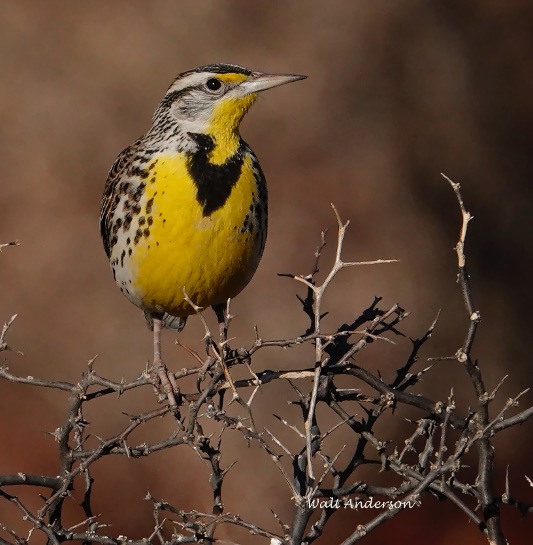
Surprise! It’s in a related grouping with the meadowlarks and the Bobolink! This group diverged early in the history of the family Icteridae, heading off on its own evolutionary trajectory that today has five species in the genus Sturnella (meadowlarks) and the unique Yellow-headed Blackbird and Bobolink, each with its own singular genus.
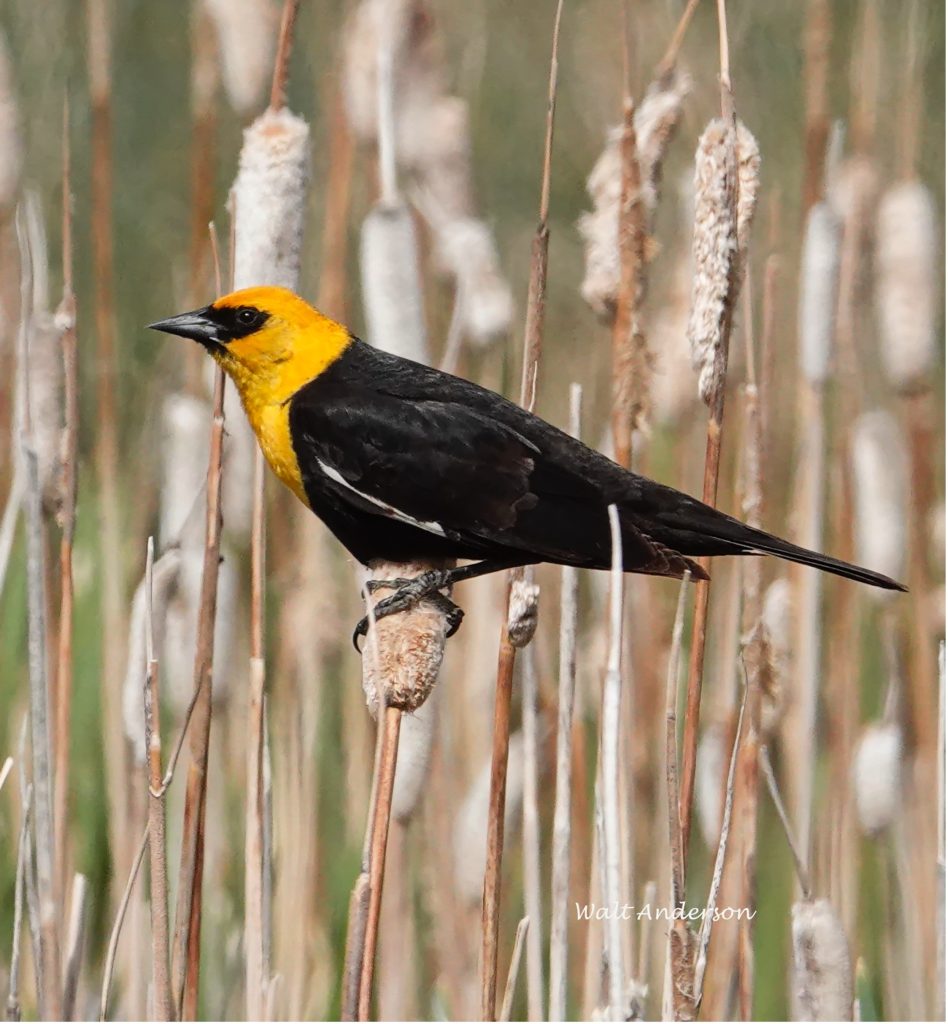
One thing that unites the Icterids (a family that also includes orioles) is that the majority have sharp, straight beaks. Compare this forceps with that of the meadowlark in the previous image. Most Icterids have special musculature that allows them to poke the bill into the ground, a pile of leaves, or foliage and open it in a gape, which gives access to potential food inside. They share that trait with the unrelated starlings.
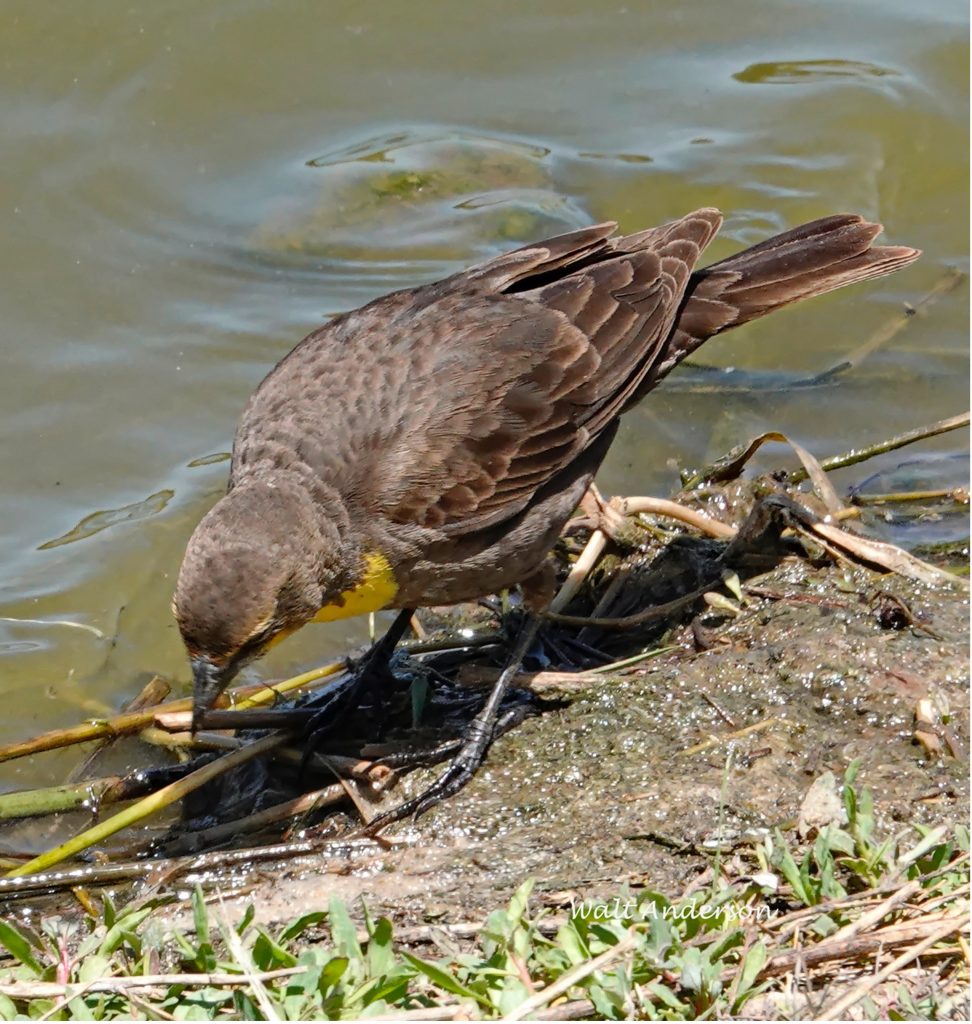
This female Yellowhead is foraging along the shore at Kachina Wetlands near Flagstaff, one of the areas in the state where the birds breed. She rotates her eyes forward and can actually peer into the gape gap she creates to grab the invertebrates there. When she is feeding nestlings, she will collect many nymphs (naiads) of dragonflies and damselflies, predators themselves.
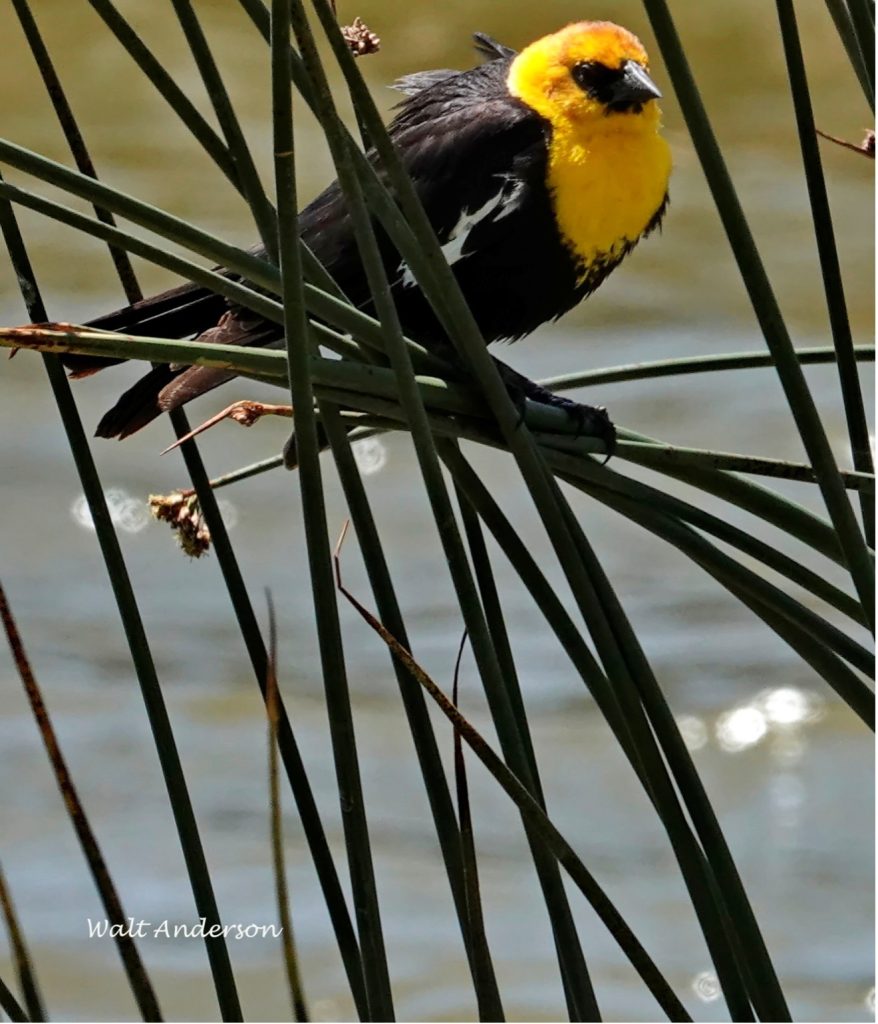
Males are almost twice as large as females and, of course, more colorful. This disparity is indicative of the breeding strategy, where males compete vigorously for access to females. Dominant males hold the most productive territories, where as many as six females will choose to nest. Yellowheads tend to arrive later at the nesting marshes than do the Redwings, and being dominant, the Yellowheads force the latter out of the best habitat. Those displaced Redwings, dominant among their own kind, then displace subordinate males from the next-best territories, creating a bit of musical-chairs chaos. Eventually, order is restored, and all the blackbirds can get serious about nesting.
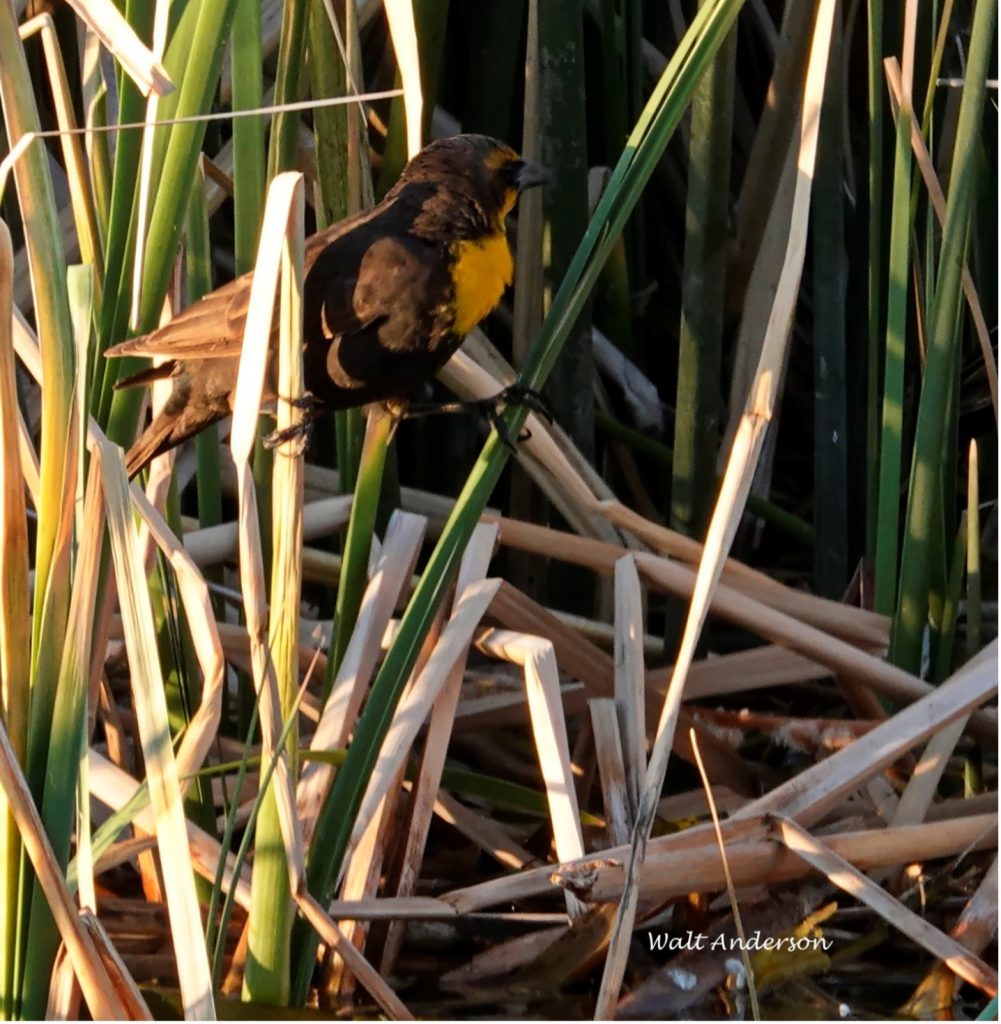
Dominant males arrive earlier on the breeding grounds than younger males, procuring the sites that the females prefer when they arrive a week or two later. Thus many males, lacking territories, get no mates during any given season: the down side of polygyny for some individuals.
You might then feel sorry for this yearling male, lacking the glorious plumage of an adult male and at a total disadvantage at holding a territory. However, next year he will be larger and more colorful. Males actually continue to grow as they get older. Thus increased size and experience will likely give this young male a chance in the future if he can stay alive and wait it out.
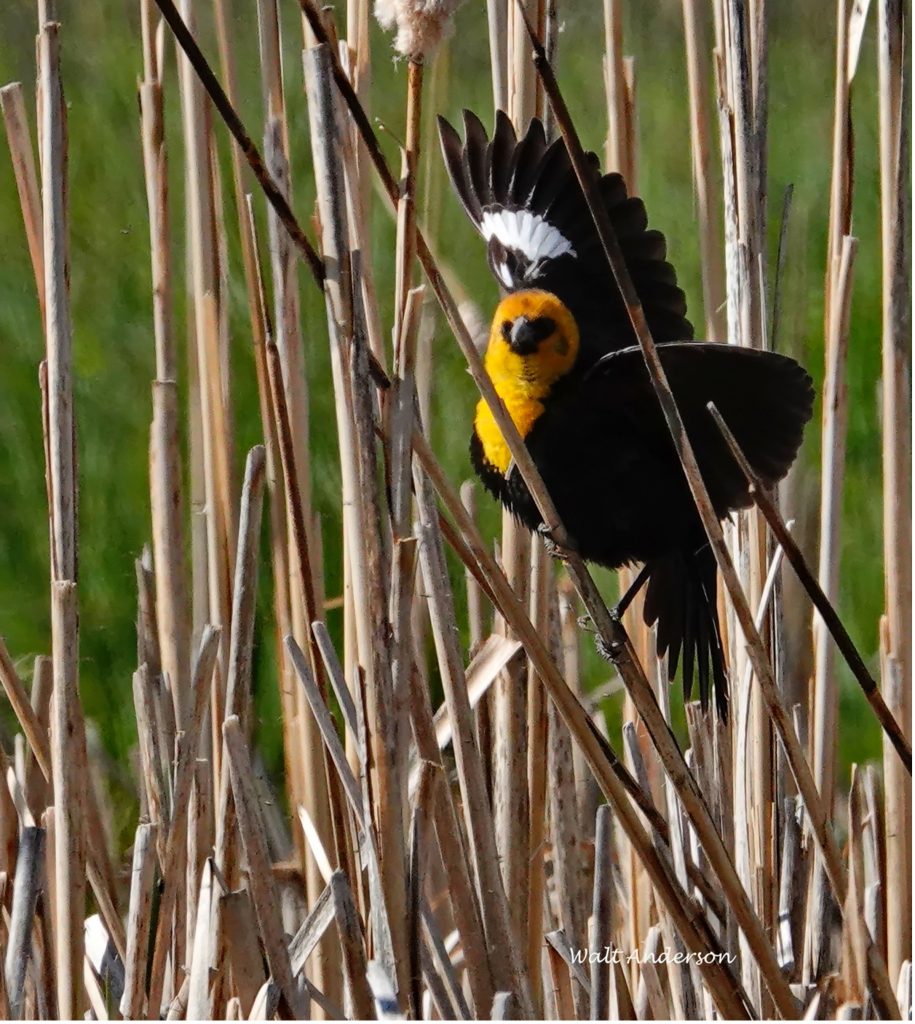
Territorial males perform impressive displays, using both vocal and visual signals. The “Symmetrical Song Spread” involves spreading the wings to show the white patches, lowering the tail, and giving the “Accenting Song,” sometimes described as “kuuk-ku-WHAAA-Kaaaa.” It’s a strange, grating, somewhat metallic song, hard to imitate with our poor vocal apparatus but highly distinctive. The “Asymmetrical Song Spread” has a nasal buzzing quality that can be shown as “kuk, kuk, kuuk…whhh-haaaaaaaaa.” Some describe the birds’ songs as like the creaking of an old gate, but to me, there is the suggestion of someone strangling a bagpipe player.
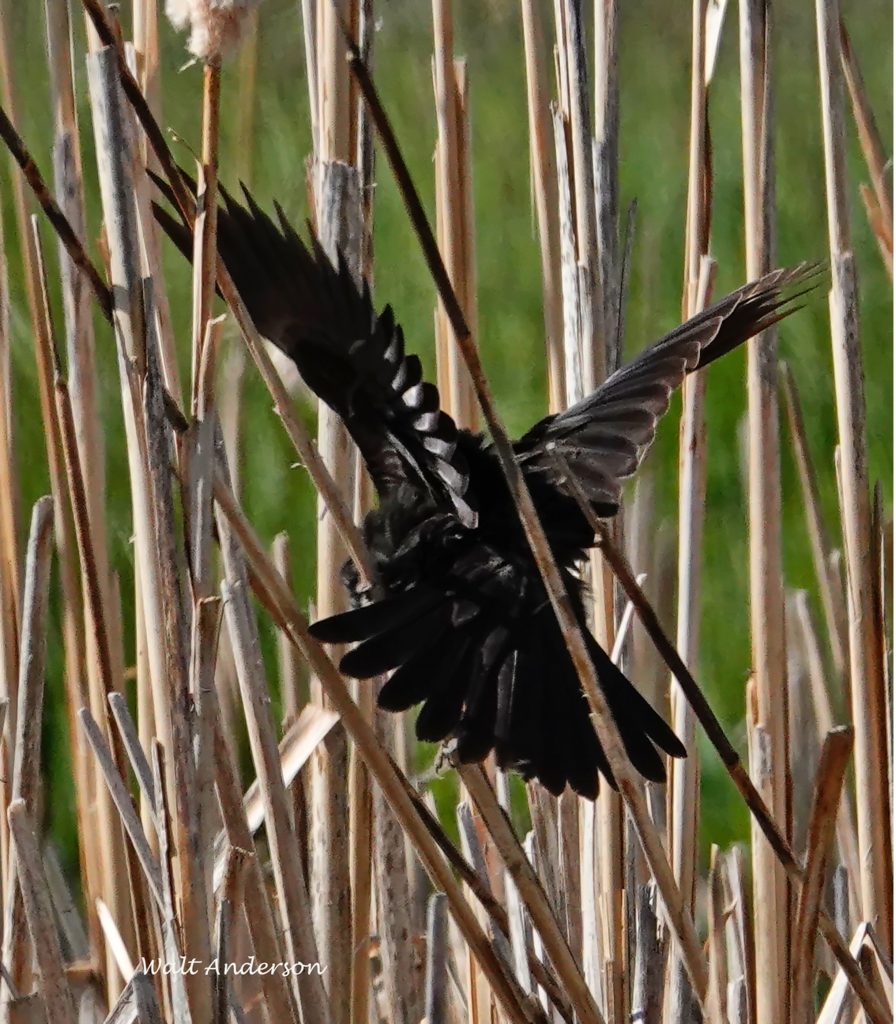
Postures differ too. The Symmetrical Song Spread often involves raising the wings high above the back. It is usually given when a new female appears in the neighborhood or a trespassing male flies overhead.
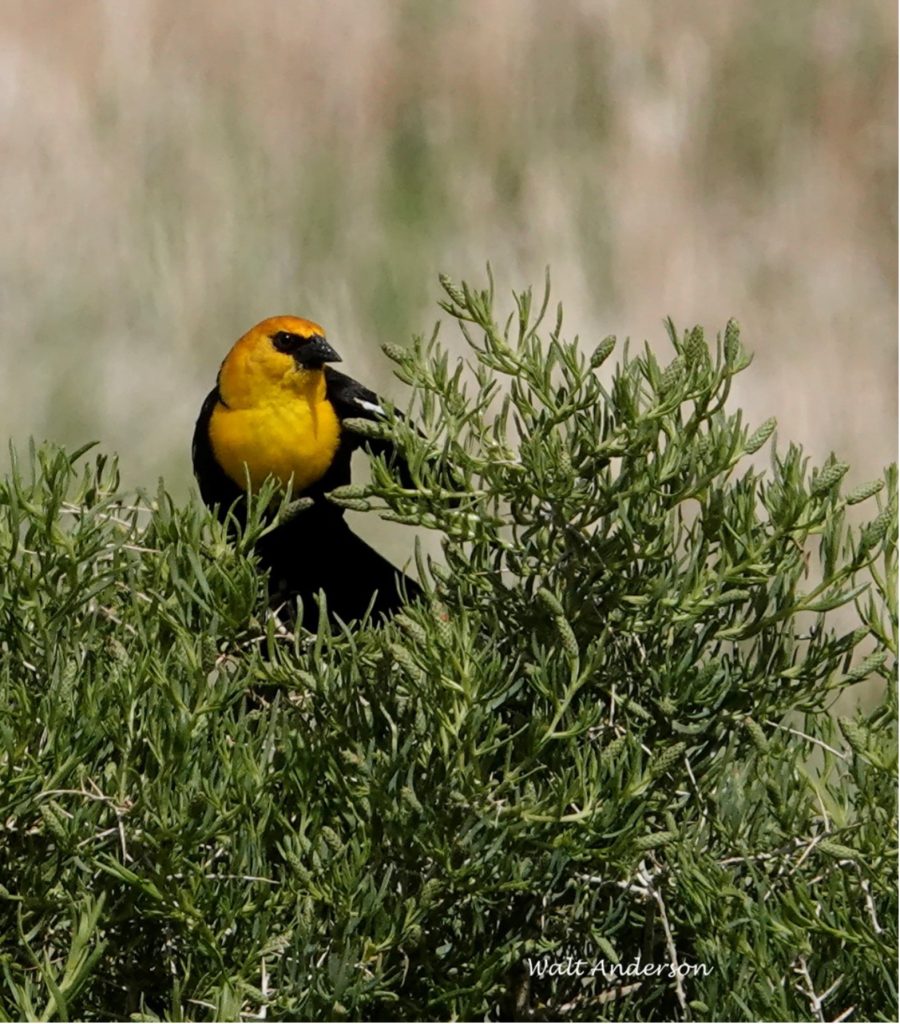
The Asymmetrical Song Spread usually has the male spreading one wing farther and looking to the left (yes, consistently!). It tends to occur when a neighboring male gets too close, resulting in a territorial warning. An aggressive chase may follow.
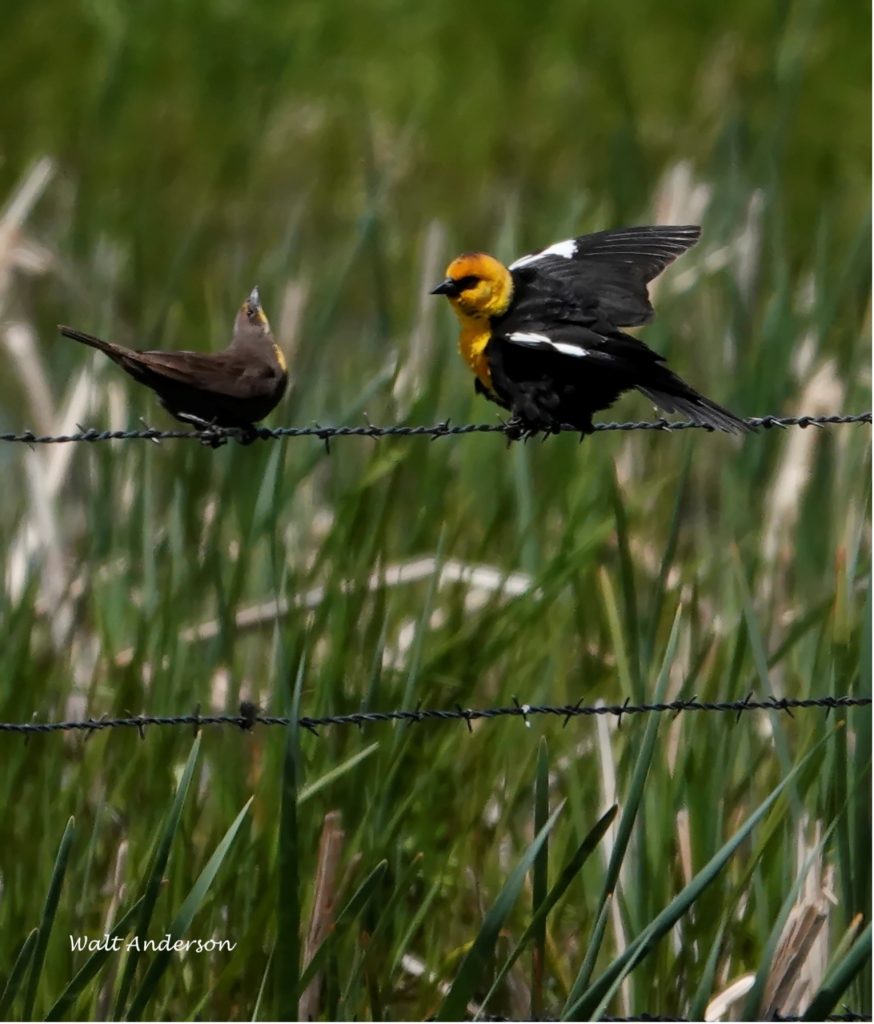
In central Oregon last month, I watched this pair interacting, giving vocalizations and visual displays multiple times. I did not happen to see what followed, but the conversation was pretty intense to watch!
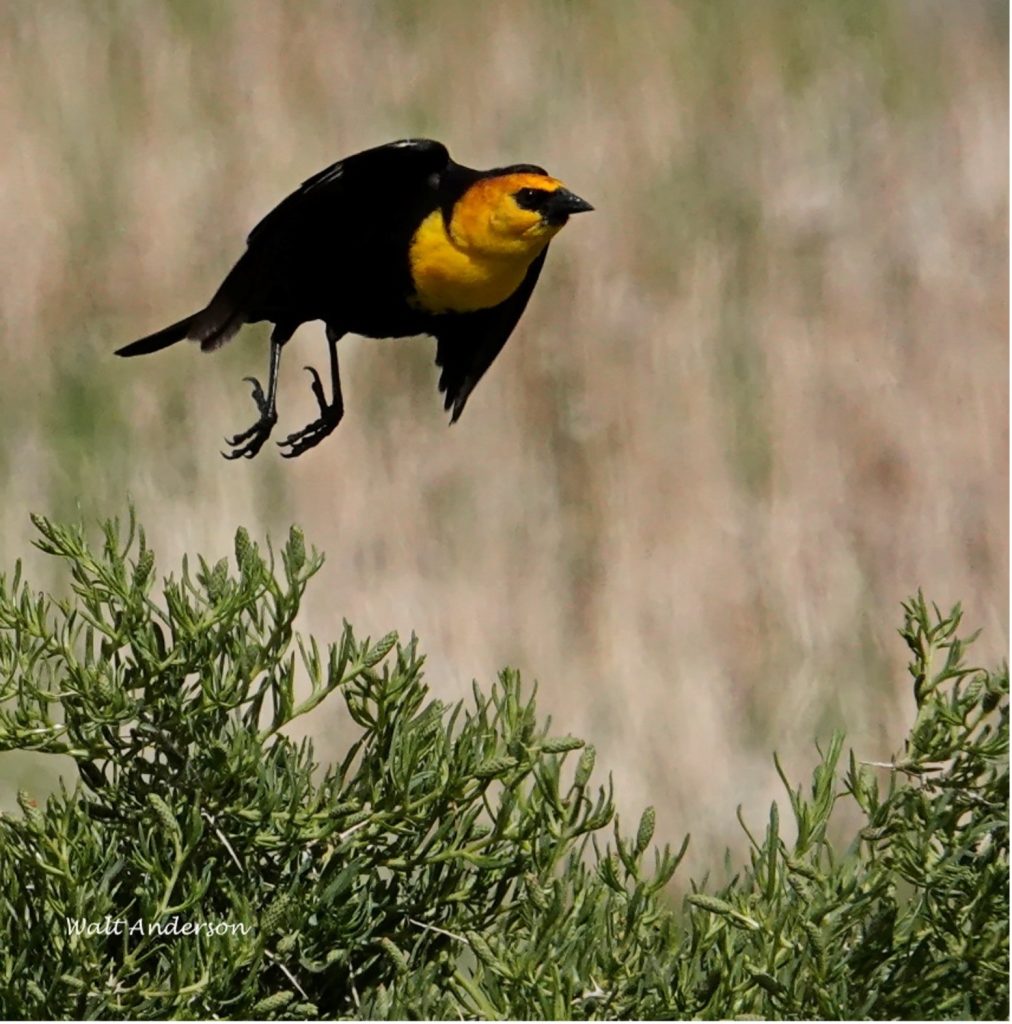
Males also have flight displays, and females have their own songs that they give in aggressive interactions with other females. They defend around their nest sites.
While territorial males are polygynous, with multiple females nesting in their domain, they are often tied up interacting with other males or a particular mate, so females have opportunities for liaisons with other males on the side. These EPC’s (extra-pair copulations) result in mixed paternity in a number of nests, perhaps the females’ way of hedging bets in the genetic game.
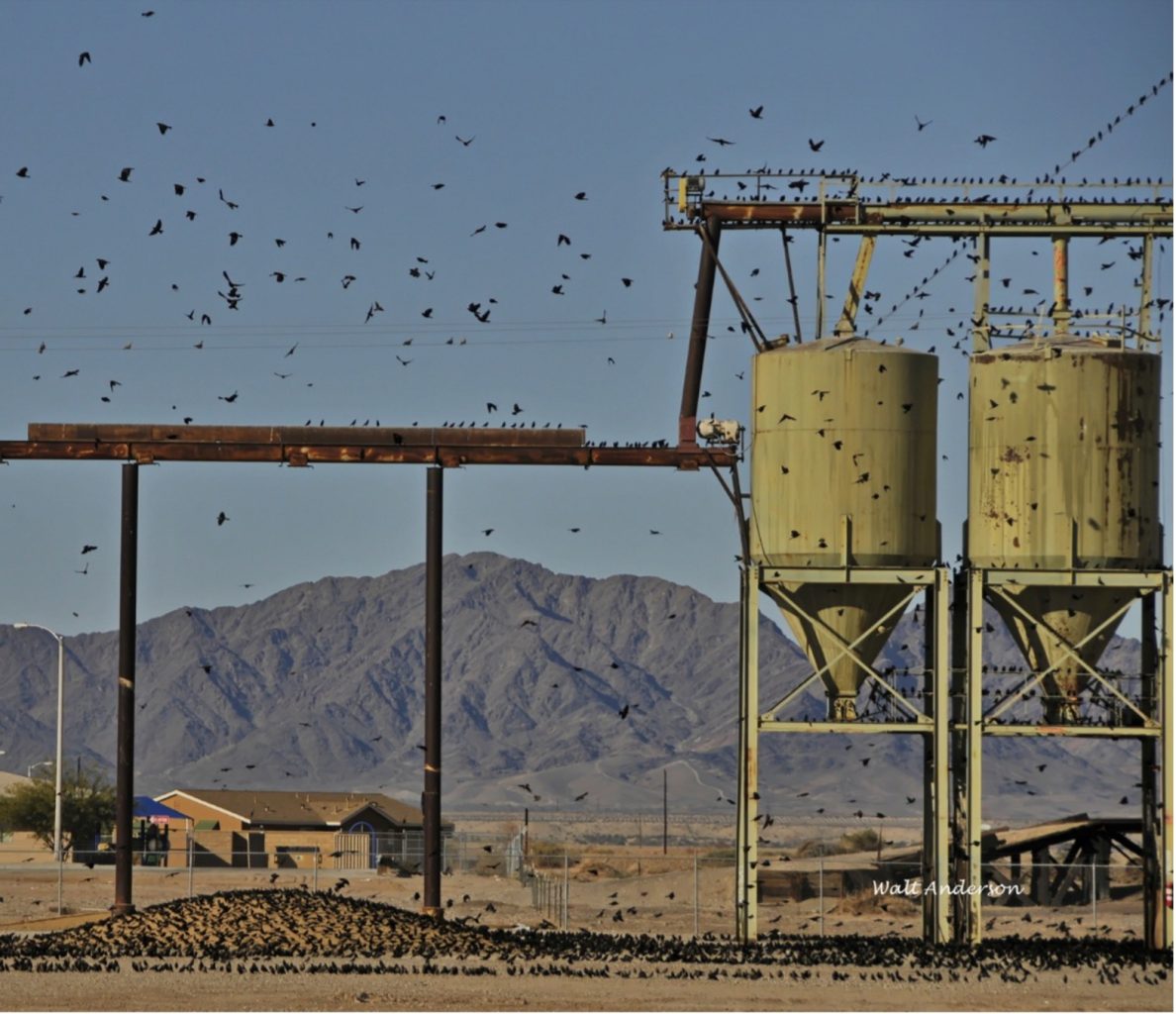
The breeding range of the Yellow-headed Blackbird is primarily inland from the western provinces of Canada down through the western states (Great Basin, Rocky Mountains, northern and central Great Plains) to northern Arizona and New Mexico, just into western Texas. Some are resident along the Lower Colorado River and the Central Valley of California. They prefer productive marshes of cattails, bulrushes, or giant reed, though they also nest in high mountain meadows.
They migrate south in late summer-early fall, with males wintering north of females and young birds, which mostly retreat to Mexico. Great numbers take advantage of spilled grain at elevators along the Lower Colorado, such as you see here in the tiny California town of Ripley (believe it or not!). Mixed flocks with Red-winged Blackbirds and Brown-headed Cowbirds also show up at BANWR on occasion.
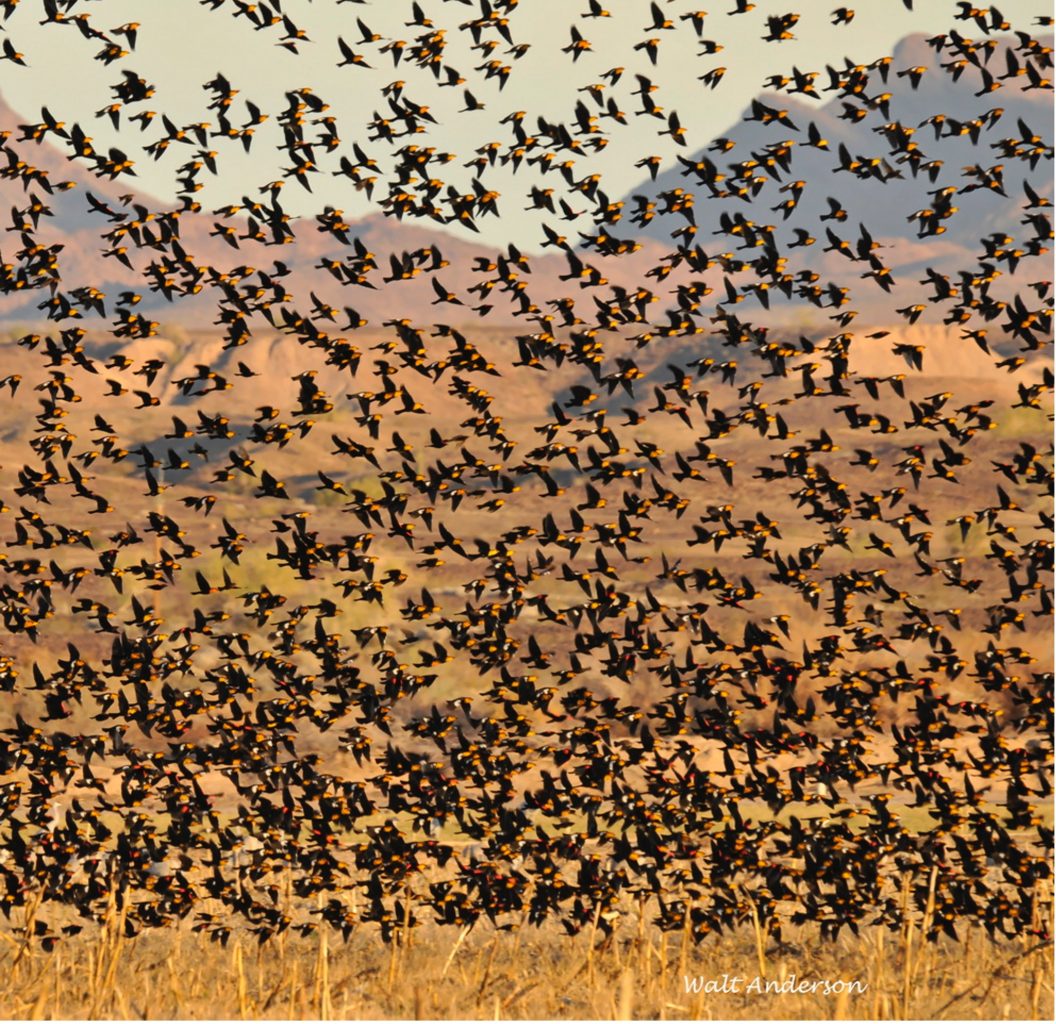
For years, I took my Wildlife Management students from Prescott College to visit the Cibola National Wildlife Refuge in SW Arizona each January. There, along with great flocks of Canada and Snow Geese and Sandhill Cranes, there were incredible aggregations of Yellow-headed and Red-winged Blackbirds, all attracted to the grain fields of the refuge. What a cacophonous chorus would greet our ears when they took flight!
This is about what you would have seen at Triangle Pond if you had been there on 13 September 2024.

Even though Yellowheads are more closely related genetically to meadowlarks than the other birds we call “blackbirds,” ecologically they are similar. They nest in marshes that Redwings also prefer (displacing them from the prime spots). In winter, they join other black birds (Red-winged and Brewer’s Blackbirds, Brown-headed Cowbirds, and European Starlings) at roosting sites, which can number in the millions, and they feed on similar foods. I’m willing to overlook the genetic evidence to accept them as “blackbirds” on ecological and evolutionary grounds (similar selective pressures yielding similar form or behavior).
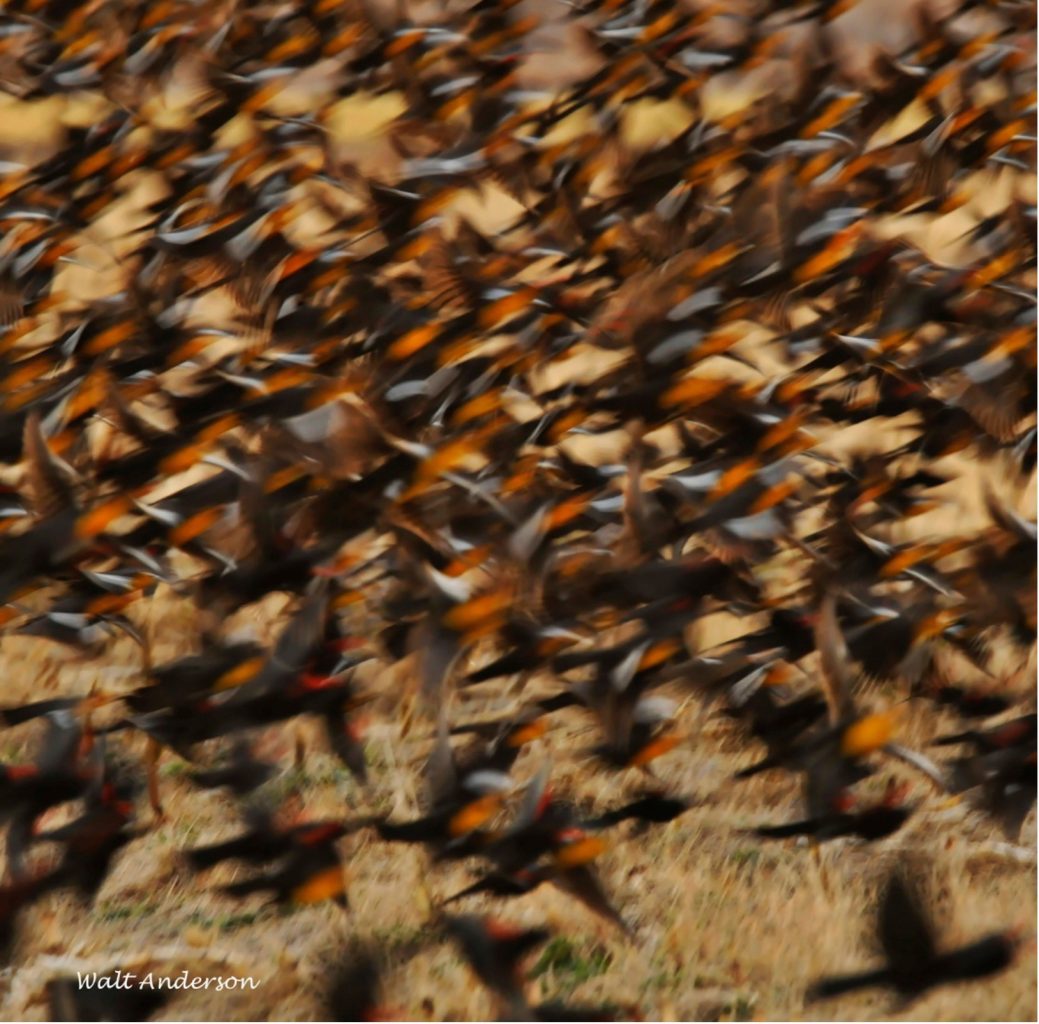
To be in the midst of a flock of blackbirds is a sensory experience to remember!
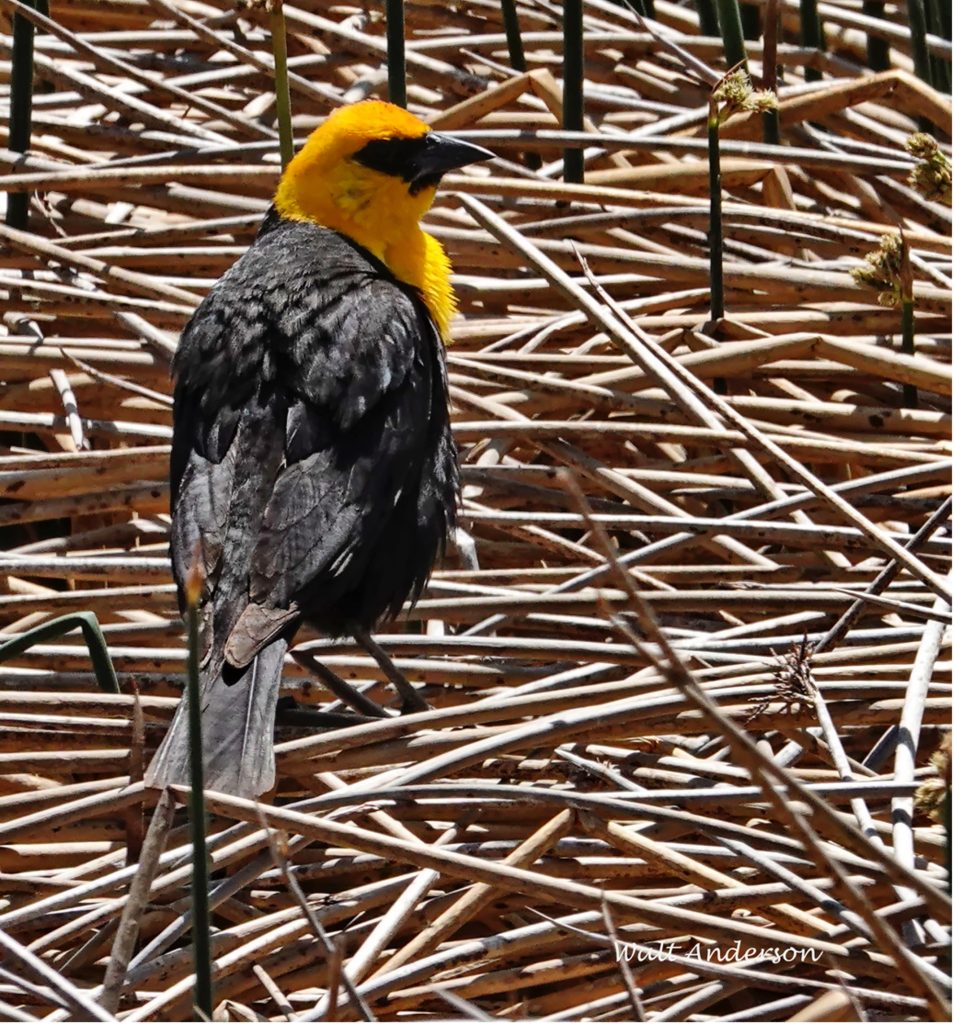
Whenever you really get to know another living creature well, you have to feel a good measure of respect and awe. Fossils found in the Southwest suggest that these blackbirds have been here for at least 400,000 years. Despite the loss of habitat as marshes have been drained and destroyed, our agriculture has allowed them to continue to thrive, even extend their range in some areas. Those of us who dedicate our lives to trying to protect diversity can get discouraged when human activities threaten even fairly common species, but we can get reinvigorated when we hear the clangorous refrains of Yellow-headed Blackbirds in a marsh or witness a flock of thousands delivering dynamic patterns of color and motion across the sky. May our descendants be able to witness that kind of beauty far into the future!
